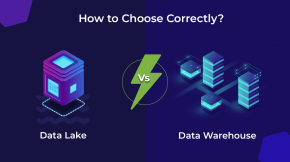The Coming Cloud Application Development Boom and How to Capitalize on
Cloud computing has revolutionized the way businesses operate. What started as a novel concept has now become an indispensable part of the modern digital landscape. As per recent reports, over 90% of enterprises now leverage cloud services in some form.
With the widespread adoption of cloud, we have seen the emergence of cloud application development. Building software specifically designed to run on cloud infrastructure provides unprecedented scalability, flexibility, and cost optimization.
In this comprehensive guide, we will explore the world of cloud application development – understanding the concept, benefits, challenges, and future trends. We will also showcase how Beyond Key, a leading cloud solutions provider, can help you unlock the true potential of the cloud.
What is Cloud Application Development?
Cloud application development refers to the process of designing, building, testing, deploying and managing applications on cloud computing platforms.
Instead of relying on traditional on-premises servers, these applications leverage the tools and services provided by cloud providers such as AWS, Google Cloud or Microsoft Azure. The codebase and data reside entirely on the vendor’s infrastructure.
Some key attributes of cloud applications:

Developing for the cloud requires a shift in architecture patterns. Developers need to build applications optimized for cloud attributes such as elasticity, distributed computing, and platform independence.
Popular approaches include microservices, serverless computing and containers. Cloud-native technologies like Kubernetes help deploy and manage apps across cloud environments.
Why Choose Cloud Application Development?
Here are some of the top reasons businesses are rapidly adopting cloud application development:
- Scalability : Cloud platforms allow you to scale compute and storage resources on demand. You can start small and increase capacity as your workload grows. This elasticity ensures applications can easily meet spikes in traffic.
- Cost Efficiency : There is no need to invest in on-premises infrastructure upfront. You only pay for the cloud resources you use. This translates to significant cost savings compared to traditional models.
- Speed and Agility : Provisioning resources and deploying updates is much faster with cloud hosting. Developers can build and ship applications rapidly without extended procurement cycles.
- Resiliency : Cloud platforms offer built-in resilience against outages and disasters through redundancy and auto-recovery features. This allows applications to stay highly available.
- Productivity : Developers get access to a wide array of cloud services including storage, databases, analytics, etc. This allows them to build feature-rich applications efficiently without having to develop everything from scratch.
Cloud Application Development Process
Building cloud-native applications involves adapting traditional software development lifecycles to leverage the power of cloud infrastructure.
Here are the key phases:

Cloud Platforms Overview
Let’s briefly discuss the major cloud platforms that offer application development services:
AWS (Amazon Web Services) : The most widely used public cloud platform with 200+ services including computing, storage, networking, databases, analytics, AI and more. Provides unmatched maturity and depth of services. Ideal for complex production applications.
Microsoft Azure : Azure provides familiar developer tools for enterprises along with emerging capabilities around AI, blockchain, quantum computing and more. Seamless integration with existing Microsoft solutions.
Google Cloud Platform (GCP) :GCP offers leading price-performance for computing and best-in-class AI/ML services like Vision API, Natural Language Processing etc. Suitable for modern data-driven applications.
Salesforce: The leading SaaS CRM platform. Salesforce Cloud Platform (formerly Force.com) allows building extensions and custom apps for Salesforce using enterprise PaaS services.
Real-World Cloud Applications
Cloud platforms enable innovative applications across domains. Here are some examples:
- Netflix – The popular media streaming platform is entirely cloud-native, leveraging AWS to deliver content to 190+ million subscribers.
- Airbnb – This hospitality disruptor runs all aspects of its business on Google Cloud, including search, payments and messaging.
- Splunk – This log analytics tool collects and processes over 150 petabytes of machine data daily on AWS cloud infrastructure.
- Slack – The workplace collaboration app uses Google Cloud Platform to support over 12 million daily active users.
- Adobe Creative Cloud – Microsoft Azure powers Adobe CC apps to enable collaboration and deliver new features to millions of creators.
Benefits of Cloud-Based Mobile Apps
Cloud application development has opened up new possibilities for mobile platforms. Here are some benefits of cloud-native mobile apps:
- Cross-platform capability – Apps can be built for multiple OS using cross-platform frameworks like React Native, Flutter etc.
- Faster development – Cloud services like notifications, storage, analytics etc. accelerate mobile development.
- Real-time updates – App upgrades and new features can be deployed instantly across all users.
- Backed by cloud infrastructure – Apps can leverage the reliability and scalability of the underlying cloud.
- Lower costs – Reduced infrastructure overheads results in significantly lower development costs.
- Improved collaboration – Development teams can collaborate better with cloud-based IDEs, repositories, test tools etc.
Key Challenges and Considerations
However, cloud application development also comes with its set of challenges:
- Learning curve – Developers need to adapt existing skills to build cloud-native, distributed applications.
- Vendor dependence – There could be overreliance on specific cloud vendors and lack of portability between platforms.
- Security – Accounting for expanded network endpoints, data encryption and managing keys is critical.
- Compliance – Applications must adhere to regulatory and data residency requirements across geographies.
- Cost optimization – Suboptimal usage of cloud resources may result in inflated costs.
Emerging Trends and Innovations
Cloud application development is a rapidly evolving space. Some innovations to watch out for include:

The Road Ahead
Cloud computing is undoubtedly the future. More and more mission-critical business systems will transition to the cloud going forward.
According to Gartner, over 85% of enterprises are expected to embrace cloud-first approach by 2025. Cloud-native programming skills will be highly sought after.
For developers, the possibilities are endless when building on cloud platforms. Real innovation will come from leveraging emerging technologies like AI/ML, AR/VR and IoT through the power of cloud computing.
Unleash the Potential of Cloud with Beyond Key
As a leading cloud solutions provider, Beyond Key helps organizations modernize their IT landscapes and harness the full potential of the cloud.
Our extensive experience stems from partnering with 100+ companies and delivering over 500 projects spanning cloud adoption, migration and application development.
Here is how we can accelerate your cloud journey:

To learn more about our capabilities or discuss potential partnerships, get in touch with us.
The future belongs to companies that embrace cloud computing today. Partner with us to transform your business into a truly digital enterprise.
















